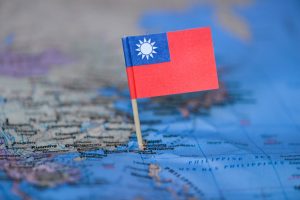Taiwan has been a hot spot in the increasingly adversarial competition between the U.S. and China. The collision between their seemingly immovable positions – China wanting to achieve unification with Taiwan, either peacefully or by force if necessary; Taiwan intent on preserving its de facto independence; and the U.S. supporting Taiwan by trying to deter China from taking unilateral actions to change the status quo – portends escalating tension going forward.
However, since the 20th National Congress of the Chinese Communist Party (CCP), there have been signs that China is recalibrating its approach to or narrative on the goal of unification with Taiwan. This appears to be part of a post-Congress broad policy adjustment ranging from an abrupt U-turn in its zero COVID policy to a lessening of regulatory scrutiny of the high-tech sector, and from the adoption of measures to support economic sectors under stress, especially real estate developers, to a diplomatic charm offensive in Europe and the Global South.
The clearest sign of China’s rethinking its Taiwan policy has been the important part Wang Huning, China’s premier political strategist, who has advised three generations of CCP top leaders, has recently played in Taiwan affairs. Chosen as the fourth-ranked leader in the CCP ruling body, the Politburo Standing Committee, Wang is slated to become, among other things, deputy chairman of the CCP Central Leading Group on Taiwan Affairs, the top authority on Taiwan policy headed by Xi Jinping himself. More specifically, he has reportedly been charged by Xi to develop a new political framework, or narrative, for the unification of Taiwan.
China’s rethinking seems to coincide with efforts by Taiwan’s opposition party, the Kuomintang (KMT), to demonstrate that it can maintain dialogue with Beijing to normalize contacts between the two peoples, helping to improve their livelihoods. Specifically, KMT Vice Chairman Andrew Hsia Li-yan has visited mainland China twice in the past six months, and met with Chinese officials in charge of Taiwan affairs.
Following Hsia’s visit in February, China resumed ferry services between Quanzhou (China) and Kinmen island (Taiwan) just offshore from Fujian province and imports from the 60 Taiwanese food companies banned after then-U.S. Speaker of the House Nancy Pelosi’s visit last year. The evolving CCP-KMT dialogues can serve the interests of both sides.
China can use the meetings with the KMT to buttress its narrative that China wants to unify Taiwan through peaceful discussions, but that the Democratic Progressive Party (DPP)-led government in Taiwan has refused to talk, eventually leaving Beijing no choice but to take forceful action to achieve unification. Very likely, this narrative could be embellished by the new unification theory that Wang has reportedly been charged with developing.
The risk is that any tweaking will be cosmetic, not sufficient to alleviate the current cross-Strait tension. Instead, those tweaks can be used to justify China stepping up its gray-zone tactics and military measures to pressure Taiwan. In this context, it is important to keep in mind the roadmap to unification specified in China’s 2005 Anti-secession Law: “…when possibilities for a peaceful reunification should be completely exhausted, the State shall employ non-peaceful means and other necessary measures to protect China’s sovereignty and territorial integrity.”
For its part, the KMT is trying to leverage its major victory in the mid-term local elections last November to build momentum for the presidential election in January 2024. Bowing somewhat to the sentiments of the Taiwanese people, the KMT has stated that the “one country, two systems” model is not suitable for Taiwan. It has downplayed references to the One China principle and focused instead on its ability to maintain dialogue with Beijing to reduce cross-Strait tension and improve contacts and livelihoods of the two peoples. This approach is not without appeal to segments of the Taiwanese people: most don’t want to be “unified” with China but also don’t want escalating tension, let alone war with China.
In short, the next 10 months will be critical to see if China’s calibration of its Taiwan policy shows any flexibility conducive to cross-Strait dialogue, especially if the KMT were to win the presidential election. In this scenario, the trajectory and dynamics of the cross-Strait relationship could change, probably giving the U.S. and China some room to manage their strategic competition. If not, the so-called new narrative will be used by China to justify even more coercive measures against Taiwan, thus escalating tension and conflict with the United States. The former scenario would help contain tension over the Taiwan Strait, but recent history suggests that the latter scenario is more likely to happen.
































